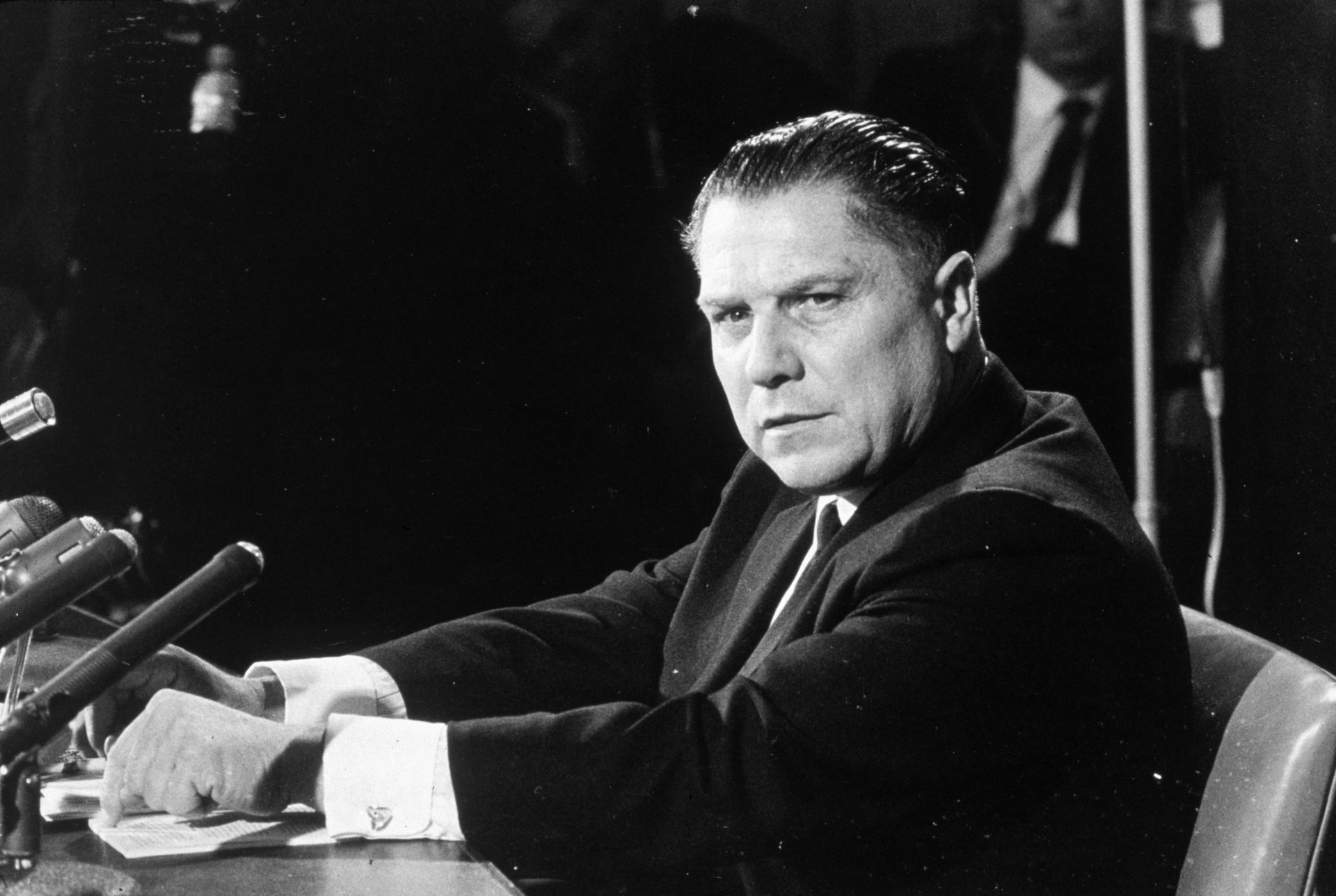
Who was Jimmy Hoffa? Jimmy Hoffa was a powerful labor union leader who mysteriously disappeared in 1975. Born in 1913, Hoffa became the president of the International Brotherhood of Teamsters, one of the largest and most influential unions in the United States. His leadership style was both admired and controversial, often involving clashes with law enforcement and alleged ties to organized crime. Hoffa's disappearance remains one of America's greatest unsolved mysteries, sparking countless theories and investigations. Despite his controversial life, Hoffa's impact on labor rights and union movements is undeniable. Want to know more? Here are 20 intriguing facts about Jimmy Hoffa.
Who Was Jimmy Hoffa?
James Riddle Hoffa, better known as Jimmy Hoffa, was a prominent American labor union leader. His life was filled with intrigue, power struggles, and mystery. Here are some fascinating facts about him.
-
Born on February 14, 1913, in Brazil, Indiana, Hoffa grew up in a working-class family. His father died when he was seven, forcing him to start working at a young age.
-
Hoffa became involved with labor unions as a teenager. He organized his first strike at 19, which marked the beginning of his lifelong commitment to workers' rights.
Hoffa's Rise to Power
Hoffa's influence grew rapidly within the labor movement. His leadership skills and charisma made him a key figure in the Teamsters Union.
-
By 1957, Hoffa became the president of the International Brotherhood of Teamsters (IBT), one of the most powerful unions in the United States.
-
Under his leadership, the Teamsters grew to over 2 million members. Hoffa's ability to negotiate better wages and working conditions made him a hero to many workers.
-
Hoffa was known for his tough negotiating tactics. He often used strikes and boycotts to force employers to meet union demands.
Legal Troubles and Imprisonment
Hoffa's career was not without controversy. His methods and associations often brought him into conflict with the law.
-
In 1967, Hoffa was convicted of jury tampering, attempted bribery, and fraud. He was sentenced to 13 years in prison.
-
Despite his imprisonment, Hoffa remained a significant figure in the labor movement. He continued to influence union activities from behind bars.
-
President Richard Nixon commuted Hoffa's sentence in 1971, after Hoffa had served only five years. However, the conditions of his release barred him from union activities until 1980.
Mysterious Disappearance
Hoffa's life took a dramatic turn with his sudden disappearance in 1975, which remains one of America's greatest unsolved mysteries.
-
On July 30, 1975, Hoffa vanished from the parking lot of the Machus Red Fox restaurant in Bloomfield Township, Michigan. He was there to meet two mobsters, Anthony Giacalone and Anthony Provenzano.
-
Despite extensive investigations, Hoffa's body was never found. His disappearance sparked numerous theories and speculations.
-
Some believe Hoffa was killed by the Mafia to prevent him from regaining control of the Teamsters. Others think he was buried in concrete at various locations, including Giants Stadium in New Jersey.
Cultural Impact
Hoffa's life and mysterious disappearance have left a lasting impact on American culture.
-
Hoffa has been portrayed in numerous films and TV shows. Jack Nicholson played him in the 1992 film "Hoffa," and Al Pacino portrayed him in the 2019 film "The Irishman."
-
His story has inspired countless books, documentaries, and articles, keeping his legacy alive in popular culture.
-
Hoffa's name has become synonymous with labor unions and organized crime, reflecting the complex nature of his life and career.
Hoffa's Legacy
Despite his controversial methods, Hoffa's contributions to the labor movement are undeniable.
-
Hoffa's efforts led to significant improvements in wages, working conditions, and benefits for millions of workers.
-
He played a crucial role in the establishment of the National Master Freight Agreement, which standardized wages and working conditions for truck drivers across the country.
-
Hoffa's leadership helped to solidify the power and influence of labor unions in the mid-20th century.
Family and Personal Life
Hoffa's personal life was as complex as his professional one.
-
Hoffa married Josephine Poszywak in 1936. They had two children, James P. Hoffa and Barbara Crancer.
-
His son, James P. Hoffa, followed in his father's footsteps, becoming the president of the Teamsters in 1999.
-
Despite his criminal activities and associations, Hoffa was known to be a devoted family man, often spending time with his wife and children whenever possible.
The Mystery Endures
Jimmy Hoffa's life and disappearance continue to captivate people. His rise from a labor leader to a national figure shows his influence. Yet, his sudden vanishing in 1975 leaves us with more questions than answers. Despite countless theories and investigations, Hoffa's fate remains one of America's biggest mysteries. His story is a mix of power, controversy, and intrigue, making it unforgettable. Whether he was a hero or a villain depends on who you ask. One thing's for sure: Hoffa's legacy in the labor movement and his mysterious end will keep sparking curiosity for years to come. The search for the truth about what happened to him is far from over. So, the next time you hear his name, remember the man behind the mystery and the impact he had on American history.
Was this page helpful?
Our commitment to delivering trustworthy and engaging content is at the heart of what we do. Each fact on our site is contributed by real users like you, bringing a wealth of diverse insights and information. To ensure the highest standards of accuracy and reliability, our dedicated editors meticulously review each submission. This process guarantees that the facts we share are not only fascinating but also credible. Trust in our commitment to quality and authenticity as you explore and learn with us.
